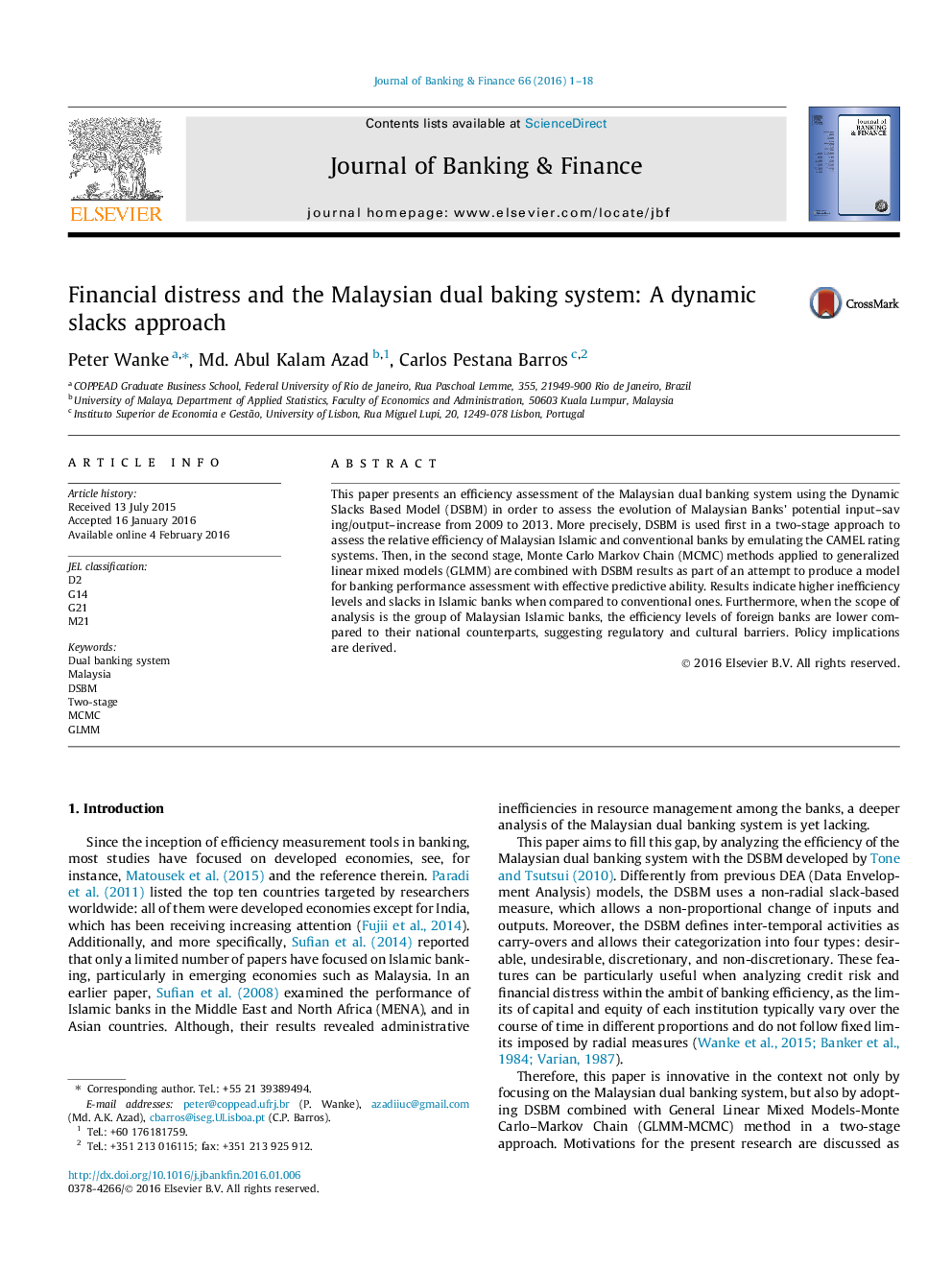| Article ID | Journal | Published Year | Pages | File Type |
|---|---|---|---|---|
| 5088396 | Journal of Banking & Finance | 2016 | 18 Pages |
â¢This paper studies the Malaysian dual banking system using a slacks based model.â¢Efficiency is derived by a model that emulates the CAMEL rating systems.â¢Results indicate higher inefficiency levels and slacks in Islamic banks.â¢When analyzing in the group of Islamic banks, efficiencies of foreign banks are lower.
This paper presents an efficiency assessment of the Malaysian dual banking system using the Dynamic Slacks Based Model (DSBM) in order to assess the evolution of Malaysian Banks' potential input-saving/output-increase from 2009 to 2013. More precisely, DSBM is used first in a two-stage approach to assess the relative efficiency of Malaysian Islamic and conventional banks by emulating the CAMEL rating systems. Then, in the second stage, Monte Carlo Markov Chain (MCMC) methods applied to generalized linear mixed models (GLMM) are combined with DSBM results as part of an attempt to produce a model for banking performance assessment with effective predictive ability. Results indicate higher inefficiency levels and slacks in Islamic banks when compared to conventional ones. Furthermore, when the scope of analysis is the group of Malaysian Islamic banks, the efficiency levels of foreign banks are lower compared to their national counterparts, suggesting regulatory and cultural barriers. Policy implications are derived.
